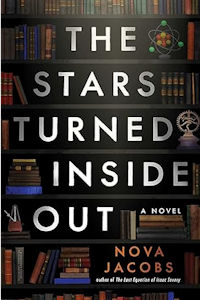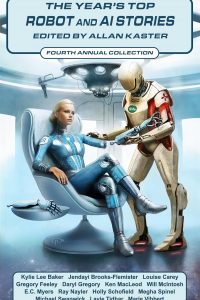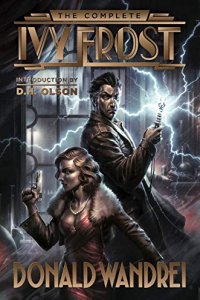Paul Di Filippo Reviews The Stars Turned Inside Out by Nova Jacobs
 The Stars Turned Inside Out, Nova Jacobs (Atria 978-1668018545, hardcover, 320pp, $27.99) March 2024
The Stars Turned Inside Out, Nova Jacobs (Atria 978-1668018545, hardcover, 320pp, $27.99) March 2024
With the loss (hopefully not permanent) of Gregory Benford’s talents to a medical incident a bit over a year ago, the SF field was deprived of perhaps the most accomplished voice in depicting the reality of “doing science.” His masterpiece, Timescape, is of course the most salient example of that mode, but the steeped-in-the-academy-and-the-laboratory worldview and attitude permeate all his work.
Also currently performing in this vein (we omit mention of such deceased giants as Asimov, Clarke and Sagan) are a handful of others, such as Robert Sawyer, Allen Steele, S.L. Huang, Vernor Vinge and Cixin Liu. But it’s a demanding and sparsely populated literary territory, and so when another such writer comes along who can cover this ground well, it’s always an occasion for joy. Such a newcomer is Nova Jacobs, with her second novel. Although not a scientist by training, Jacobs exhibits keen insights into the minds and practical lifestyles of the professional physics researcher. Her book gives us verisimilitude with panache.
Now, it should be mentioned at this point that Jacobs’s book is mainly a hybrid of murder mystery and the novel of contemporary science. It hews to that mode which used to be called “the novel of science,” exemplified by the work of C.P. Snow and by Sinclair Lewis’s Arrowsmith. The speculative, stefnal stuff forms an essential but not dominant thread. For most of the plot, the reader will be immersed in the vivid personalities and the all-too-plausible machinations of the staff at the CERN collider facility spanning the Swiss-French border. But tunnelling through the “mundane” doings—“mundane” in the sense of being part of the real world, not in the sense of boring—is a multiversal motif which pays off with subtle power in the book’s climax.
Our story opens with the discovery of a corpse in the collider tunnels. It’s one of the staff scientists who, for mysterious reasons, entered the apparatus when it was dormant, and then was unfortunate enough to be caught in the deadly reactivated beam. But reactivated for what unscheduled reason, and by whom? The victim was one Howard Anderby, a brilliant but quirky fellow. No one was really close enough to him to provide any clues to his demise—except for Dr. Eve Marsh, who was secretly his lover, but remains mum.
The administrators of CERN decide that they can sit on the news of the death for a short time, to try to avoid bad publicity. But meanwhile they will employ the private investigator Sabine Leroux to discover if the death is an accident, suicide—or murder. And so begins a cat-and-mouse quest to winkle out some answers, a pursuit which is only intensified with the death of a second scientist.
This realtime arc is counterbalanced by the fifty percent of the book which is backstory, revealing the career paths, love affairs, scientific passions and familial entanglements of the cast. (Anderby’s aunt, Frances Schoenberg, who, it eventuates, helped to build CERN, plays a crucial role, lending a kind of Hardy Boys riff to the mystery.) Dr. Anav Bose is a good-natured fellow who, however, hides his true sexual identity. Simon De Vries is smart and ambitious, looking for dark matter in his special xenon tank, but usually sporting a cynical and foul mien. And then there’s Niels Thorne:
The towering man was not an actual tour guide but a Canadian physicist named Niels Thorne. In his finely cut houndstooth blazer and fringed scarf fluttering dramatically behind him, Niels was at any given time the most well-dressed person at CERN—not a particularly remarkable distinction, given that denim and athleisure wear were the lab’s reigning fashions. Still, Niels’s immaculate threads led colleagues to wonder if he came from money, while others speculated his dress was merely overcompensation for a shabby childhood. Whatever the reason Niels seemed to prefer swanning around their one-square-kilometer campus with guest to doing any real physics.
And finally there’s the hanger-on New Age author Wolfgang Shreft. Could this somewhat ridiculous self-promoter have any knowledge regarding Anderby’s death?
The two characters who receive the lion’s share of the spotlight, and who are plumbed most deeply, are PI Sabine Leroux and Dr. Eve Marsh. The two women are vastly different from each other, but Jacobs teases out their parallel qualities of curiosity, dedication, wit, and ethics.
Ultimately, The Stars Turned Inside Out provides both intellectual and visceral thrills, making us believe that the men and women who investigate the highest theoretical realms of the cosmos have their feet planted firmly in the carnal gutter with rest of us, invoking both our empathy and admiration.
 While you are here, please take a moment to support Locus with a one-time or recurring donation. We rely on reader donations to keep the magazine and site going, and would like to keep the site paywall free, but WE NEED YOUR FINANCIAL SUPPORT to continue quality coverage of the science fiction and fantasy field.
While you are here, please take a moment to support Locus with a one-time or recurring donation. We rely on reader donations to keep the magazine and site going, and would like to keep the site paywall free, but WE NEED YOUR FINANCIAL SUPPORT to continue quality coverage of the science fiction and fantasy field.
©Locus Magazine. Copyrighted material may not be republished without permission of LSFF.








Publishing delays sometimes smack us right between the eyes. Sadly, Vernor Vinge passed away two days before this review hit my inbox.